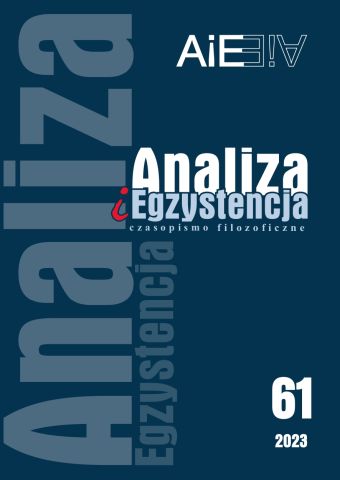
ISSN: 1734-9923
eISSN: 2300-7621
OAI
DOI: 10.18276/aie.2023.61-03





Issue archive /
61 (2023)
The Problem of Culture and Nature in Carl Gustav Jung’s Psychoanalytical Concept
| Authors: |
Patrycja
Neumann

Uniwersytet Wrocławski |
| Keywords: | Jung’ s psychology culture nature archetype instinct symbol libido derive |
| Data publikacji całości: | 2023 |
| Page range: | 16 (51-66) |
Abstract
According to the classical approach culture is the opposite of nature, and man, as a world-transforming being, is the engine of civilization development. C. G. Jung's writings contain a non-classical concept of culture, according to which the collective unconscious determines the way of interpreting and understanding reality, and thus the development of culture. The psychiatrist considers man as a symbol-forming creature. He wrote about the "symbol drive" which causes the creation of symbols to happen spontaneously. There is a connection between the action of instincts, which have a biological basis, and the archetypal source of symbols. There are forces of nature in the unconscious - in particular, the libido and instincts. Culture arises between the unconscious and consciousness, and at the same time, the process of its development has a species-specific aspect.
Download file
Article file
Bibliography
| 1. | Barentsen (2015), Silent Partnerships: Schelling, Jung, And The Romantic Metasubject, Symposium 19 (1), 67-79. https://doi.org/10.5840/symposium20151916 |
| 2. | Böhme (2013), Sześć punktów teozoficznych, Warszawa: PWN. |
| 3. | Brook (2015), Jung and Phenomenology, New York: Routledge, Tylor & Francis Group. |
| 4. | Cambray (2014), Synchroniczność. Natura i psyche we wszechświecie wzajemnych połączeń, Katowice: Instytut Terapii Integralnej Sławomira Kwiatkowska. |
| 5. | Fordham (2018), Analytical Psychology: A Modern Science, London, New York: Routledge, Tylor & Francis Group. |
| 6. | Jung(1959), Aion. Researches into the Phenomenology Of The Self, New York: Pantheon Books. |
| 7. | Jung (1967), Alchemical Studies, New York: Princeton University Press. |
| 8. | Jung (2011), Archetypy i nieświadomość zbiorowa, Warszawa: KR. |
| 9. | Jung (1970), Civilization in Transition, New York: Princeton University Press. |
| 10. | Jung (2011), Dynamika nieświadomości, Warszawa: KR. |
| 11. | Jung (1961), Freud and Psychoanalysis, New York: Pantheon Books. |
| 12. | Jung (1919), Instinct and the Unconscious, British Journal of Psychology 1904-1920 10 (1), 35-42. |
| 13. | Jung (1970), Psychiatric Studies, New York: Princeton University Press. |
| 14. | Jung (1995), Psychologia a religia, Warszawa: Wrota. |
| 15. | Jung (1953), Psychological Types, New York: Pantheon Books. |
| 16. | Jung (1975), Psychology and Religion: West and East, New York: Princeton University Press. |
| 17. | Jung (1989), Rebis czyli kamień filozofów, Warszawa: PWN. |
| 18. | Jung (2012), Symbole przemiany. Analiza preludium do schizofrenii, Warszawa: KR. |
| 19. | Jung (1925), Symbole der Wandlung. Analyse des Vorspiels zu einer Schizophrenie, Leipzig,Wien: Franz Deuticke. |
| 20. | Jung (1953), Symbolic life. Miscellaneous Writings, New York: Princeton University Press. |
| 21. | Jung (2014), Symbols of Transformation: An Analysis of the Prelude to a Case of Schizophrenia, New York: Routledge. |
| 22. | Jung (1902), Zur Psychologie und Psychopathologie sogenannter okkulter Phänomene, Leipzig: Oswald Mutze. |
| 23. | Krzemieniowa (1983), Wstęp. W: Schelling, Filozofia sztuki , Warszawa: PWN. |
| 24. | Kwiatkowska (2003), Poszukiwanie kultury. O jungizmie od strony kulturologicznej. W: Błocian, Saciuk (red.), Nieświadomość to odrębne królestwo...(s. 207-215).Toruń: Adam Marszałek. |
| 25. | McLynn (2000), Carl Gustav Jung, Poznań: Zysk i S-ka. |
| 26. | Pajor (2004), Psychologia archetypów Junga, Warszawa: Eneteia. |
| 27. | Platon (1999), Fajdros. W: Dialogi T. 2, Kęty: Antyk. |
| 28. | Piróg (1999), Psyche i symbol. Teoria symbolu Carla Gustava Junga na tle ujęć porównawczych rzeczywistości symbolicznej, Kraków: Nomos. |
| 29. | Rosińska (1985), Psychoanalityczne myślenie o sztuce, Warszawa: PWN. |
| 30. | Schelling (1983), Filozofia sztuki, Warszawa: PWN. |
| 31. | Voss A. (2009), A Methodology of the Imagination, Eye of the Heart. A Journal of Traditional Wisdom 3, 37-53. |